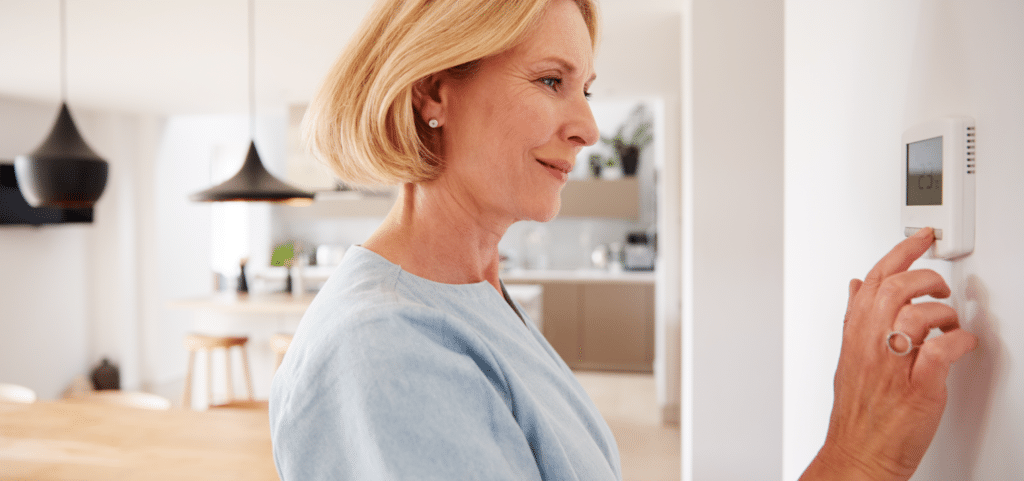
Energy Habits at Home
Energy use habits and accountability vary among American households. Explore how men and women handle energy monitoring and the toll energy habits can take on relationships.
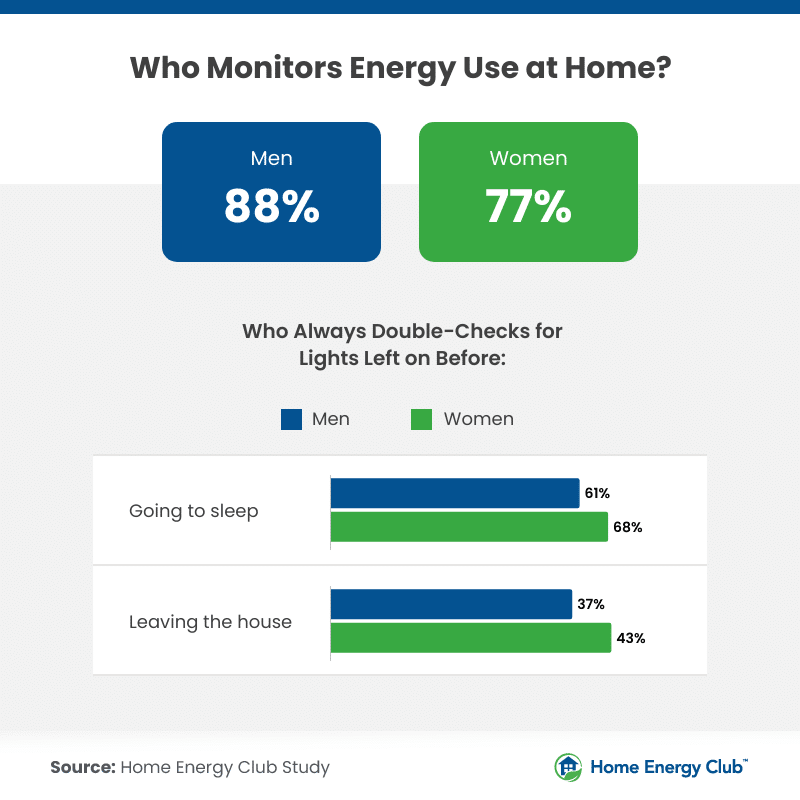
When asked if they were primarily responsible for monitoring energy use in their homes, 88% of men and 77% of women said yes. This suggests that both genders perceive themselves as the home energy monitor in many cases, likely keeping track of daily habits such as turning off lights, adjusting thermostats or unplugging unused appliances and devices.
Double-checking that lights are off before sleeping is a widespread habit, with 65% of Americans making it a nightly routine. Women (68%) were more diligent in turning off lights at bedtime than men (61%). However, ensuring lights are off before leaving the house appears to be less of a priority, with fewer people (40%) saying they always do so.
Despite efforts to monitor energy use, 36% admitted to regularly leaving lights on, with the youngest consumers standing out as the most forgetful. Nearly half of Gen Z respondents (47%) said they often leave lights on, and more than half reported not checking that lights are off before going to bed.
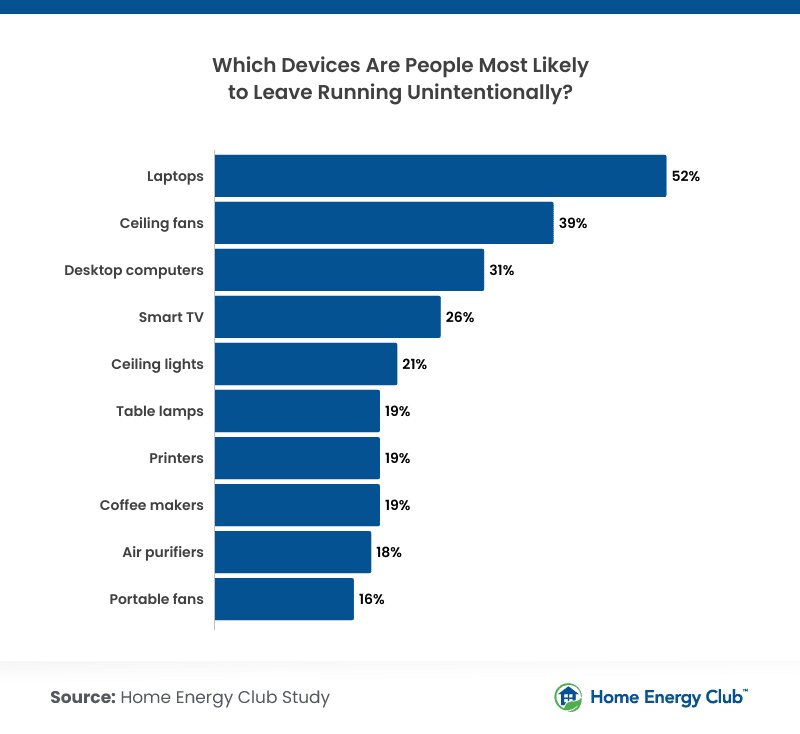
People are most likely to leave laptops, ceiling fans and desktop computers running unintentionally, which not only wastes energy but also drives up electric costs.
These habits can strain relationships when utility bills become a source of conflict: 7% of couples, including 10% of men and 4% of women, said disagreements over these expenses have led to breakups. Adding to the tension, 27% of men and 18% of women (22% overall) have lied about turning off a light or device to avoid an argument.
While some feel regret about their energy habits, others don’t seem bothered. Over a quarter (27%) reported that they don’t feel guilty when they forget to turn off lights or devices, including 32% of men and 22% of women.
The Thermostat Tug-of-War
Thermostat settings can be a heated topic in many households. Discover how disagreements over temperature control affect relationships and the compromises couples make.
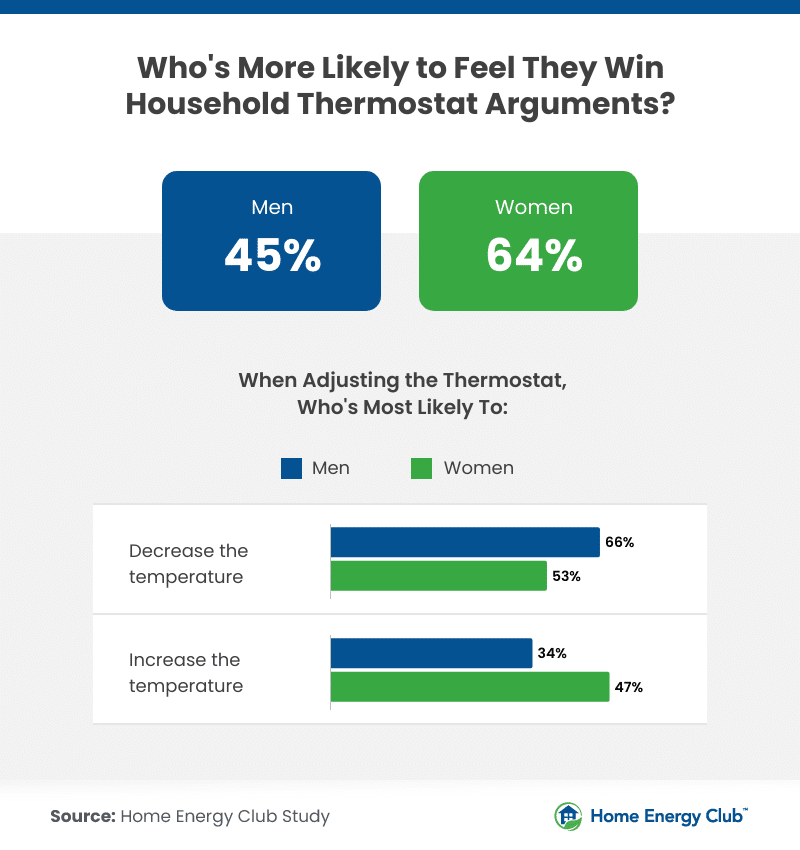
Three-quarters of couples (including 75% of men and 75% of women) claimed to control the thermostat in their household. Conflicts were common, with 35% admitting to arguments over temperature settings. Women (67%) were more likely than men (45%) to feel they emerged victorious in thermostat battles. For some, the stakes were even higher — nearly 1 in 10 said thermostat arguments had contributed to a breakup. Men (13%) were more likely than women (7%) to report this outcome.
Couples have found ways to resolve thermostat temperature disputes. The most popular compromise — chosen by 61% — was using blankets or heated throws. Other strategies included wearing coats or extra layers indoors (39%), using portable fans (35%), space heaters (30%), or turning off the thermostat entirely and opening windows (29%). Some simply avoided certain rooms due to uncomfortable temperatures (17%).
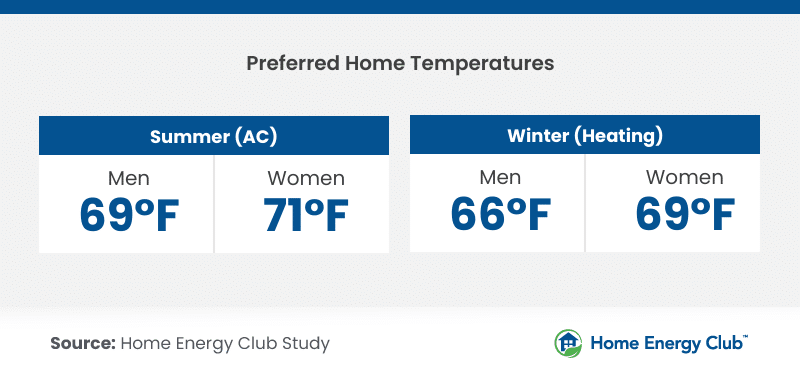
Thermostat habits often occur in secret. Over half of respondents (54%) admitted to adjusting the thermostat when no one was looking, and 14% confessed to doing so deliberately to annoy someone. Additionally, 25% of people (27% of men and 25% of women) admitted to lying about making thermostat adjustments. Social pressure also influenced home energy use habits: 15% said they’ve felt judged by guests or family members for not being energy-conscious enough.
What Drives Conservation
Energy-saving habits help reduce household consumption, but not all practices are equally embraced. Learn which habits Americans prioritize, where they fall short, and how generational and demographic differences influence their choices.
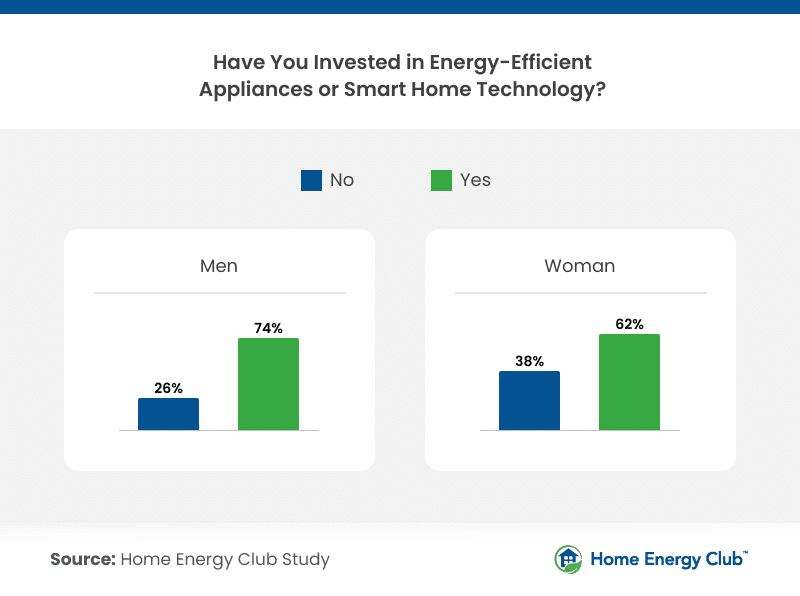
Among the most common energy-saving practices, 65% of Americans said they regularly use energy-efficient LED bulbs, while 57% rely on natural light during the day. Other top habits included:
- Washing clothes in cold water (51%)
- Reducing thermostat usage (46%)
- Sealing gaps in doors and windows (36%)
- Unplugging appliances (29%)
- Installing programmable thermostats (26%)
- Using eco-mode on devices (25%)
Americans’ primary motivation for saving energy was financial savings (73%), far outweighing environmental impact (24%) or convenience (2%).
Rising costs have pressured 50% of consumers — 53% of women and 43% of men — to embrace habits such as these. A majority (79% of men and 74% of women) claimed to be energy-conscious consumers, but only 26% and 25%, respectively, often unplugged devices to save energy. Another 30% said they always keep devices plugged in when they are not in use.
Investments in energy-efficient technology also showed room for growth: 37% of LGBTQ+ and 33% of heterosexual individuals have not yet invested in energy-efficient appliances or smart home technology. Gen Z was the generation least likely to adopt such technology, with 53% reporting a lack of investment.
The Energy-Conscious Divide
Despite widespread awareness of energy-saving practices, Americans have yet to fully adopt them. While many take steps such as using LED bulbs and reducing thermostat use, habits such as unplugging devices and investing in energy-efficient appliances remain less common. Generational and demographic differences also reveal gaps in conservation efforts. Bridging these divides could create significant opportunities for improving energy efficiency nationwide.
Methodology
We surveyed 1,008 Americans in relationships to explore men’s and women’s everyday energy habits. Among them, 58% were women, 41% were men, and 1% identified as non-binary. The generational breakdown of respondents was as follows: Gen Z (12%), Millennials (53%), Gen X (29%), and Baby Boomers (6%). Survey data was collected on December 5, 2024.
About Home Energy Club
At Home Energy Club, we’re dedicated to helping families save on electricity costs while promoting energy-conscious habits. We offer trusted tools and resources to compare energy plans, identify the best electricity rates, and adopt eco-friendly practices. With a focus on transparency and customer satisfaction, we strive to make energy savings accessible and stress-free for everyone.
Fair Use Statement
You are permitted to share this data non-commercially with a link back here to the original source.

